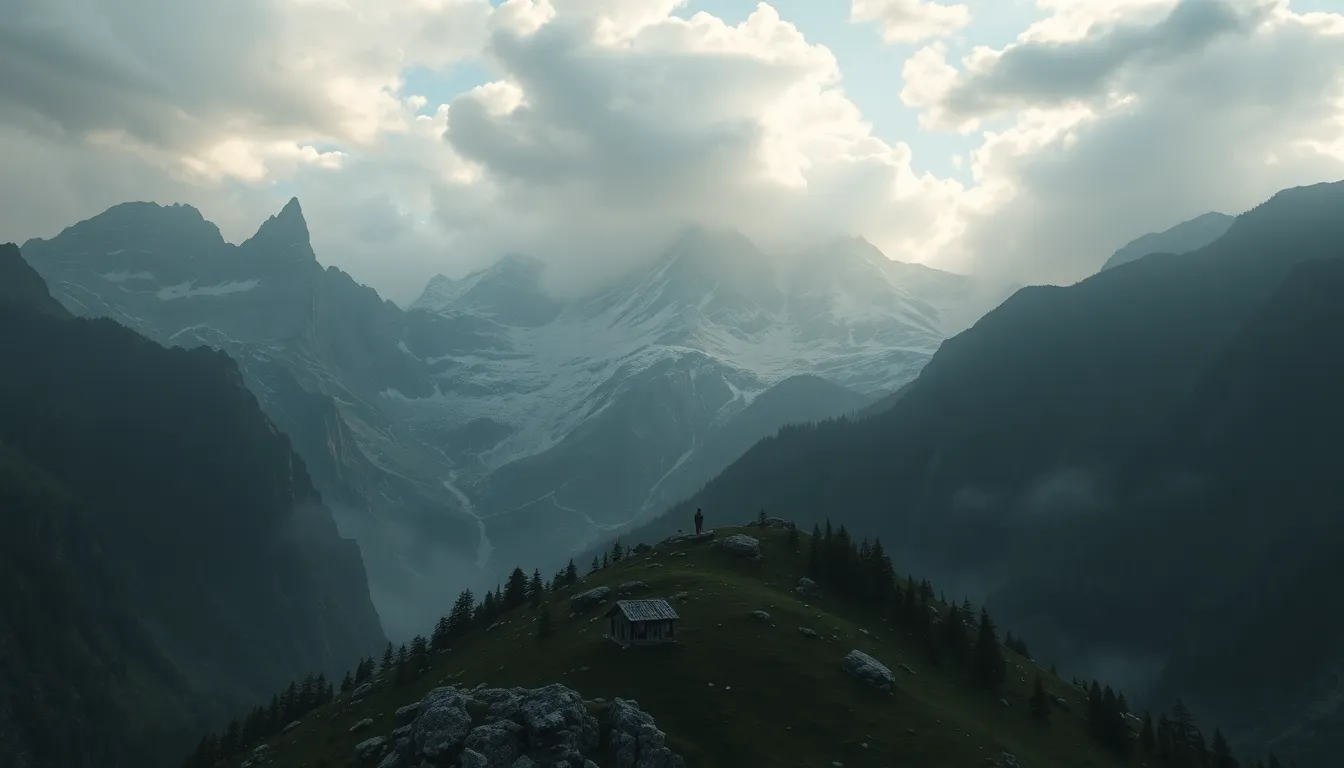The Mountain of the Unknown: Myths of Mystery and Intrigue
Introduction to the Mountain of the Unknown
The Mountain of the Unknown, often shrouded in fog and enigma, holds a significant place in the collective consciousness of various cultures. It symbolizes the mysteries of nature and the human experience, evoking both awe and trepidation. Through centuries, this mountain has inspired countless tales, each reflecting the fears and wonders of the people who inhabit its shadow.
With roots steeped in mythology and folklore, the Mountain of the Unknown serves as a testament to humanity’s ongoing quest for understanding. It stands not only as a physical landmark but also as a metaphorical space where the known meets the unknown, challenging our perceptions of reality.
Geographical Location and Description
Located in an unspecified region, the Mountain of the Unknown boasts towering peaks that pierce the sky, with rocky outcrops and steep cliffs that pose challenges to even the most seasoned climbers. Its high altitude gives rise to a unique ecosystem characterized by:
- Dense forests at lower elevations
- Alpine meadows dotted with wildflowers
- Perpetual snow caps at the summit
The surrounding environment, with its shifting weather patterns and treacherous terrain, plays a crucial role in the myths that envelop the mountain. Locals often describe the mountain as a living entity, one that thrives on mystery and challenges those who dare to explore its depths.
Historical Significance of the Mountain
Throughout history, ancient civilizations have revered the Mountain of the Unknown, often associating it with divine power. Archaeological findings suggest that:
- Early settlers performed rituals at its base, seeking blessings from the mountain spirits.
- The mountain served as a landmark for navigation and spiritual pilgrimage.
- It was a site of significant historical events, including battles and treaties.
These connections between the mountain and historical narratives contribute to its enigmatic status, weaving a rich tapestry of stories that continue to resonate in modern times.
Folklore and Legends: Stories Passed Down Through Generations
The folklore surrounding the Mountain of the Unknown is vast and varied, with tales that have been passed down through generations. Some of the most prominent myths include:
- The Legend of the Guardian Spirit: A deity who protects travelers, appearing as a shimmering figure in the mist.
- The Tale of the Lost Tribe: A group of people who vanished into the mountain, believed to be living in harmony with nature.
- The Curse of the Summit: A warning that those who seek to conquer the mountain will face dire consequences.
These tales often feature notable characters, such as brave explorers, cunning tricksters, and wise sages, each contributing to the rich narrative tapestry that surrounds the mountain.
The Role of the Mountain in Various Cultures
The Mountain of the Unknown has inspired diverse interpretations across different cultures. Indigenous peoples often view it as a sacred site, integral to their spiritual practices, while modern interpretations may lean towards scientific exploration and adventure.
Comparing these perspectives reveals a fascinating dichotomy:
- Indigenous interpretations often emphasize reverence and connectivity to the earth.
- Modern views focus on conquest and exploration, sometimes neglecting the cultural significance of the site.
This contrast highlights the evolving relationship humanity has with the natural world, shaped by both respect and curiosity.
The Psychological Impact of the Mountain of the Unknown
The psychological allure of the Mountain of the Unknown can be attributed to its embodiment of fear and fascination. It represents the ultimate unknown, a space where the boundaries of reality blur. This duality has profound effects on the human psyche:
- Fear of the unknown often leads to myths that explain natural phenomena.
- Fascination drives exploration and the pursuit of knowledge.
The interplay between these emotions shapes our understanding of nature and our place within it, reflecting a deep-seated desire to comprehend the mysteries of existence.
Modern-Day Expeditions and Research
In recent years, the Mountain of the Unknown has attracted numerous explorers and researchers eager to uncover its secrets. Notable expeditions have included:
- Scientific teams studying the unique flora and fauna of the region.
- Adventurers attempting to summit the peak, documenting their journeys.
- Archaeologists searching for remnants of ancient civilizations.
These efforts have led to groundbreaking discoveries, shedding light on the mountain’s ecological and historical significance, while also challenging long-held myths.
The Mountain in Popular Culture
The Mountain of the Unknown has permeated popular culture, inspiring countless works of literature, film, and art. Its representation varies widely:
- In literature, it often symbolizes the journey into the self and the unknown.
- Films depict it as a site of adventure, danger, and transformation.
- Art captures its majestic beauty, evoking emotions of awe and wonder.
This cultural presence perpetuates the myths and intrigues surrounding the mountain, ensuring its place in the collective imagination.
Conservation and Preservation Efforts
As interest in the Mountain of the Unknown grows, so does the need for conservation. Safeguarding its cultural and natural heritage is crucial, with current initiatives focusing on:
- Environmental protection measures to preserve its unique ecosystem.
- Community engagement to respect and honor indigenous traditions.
- Educational programs to raise awareness about the mountain’s significance.
However, challenges remain, including tourism pressures and climate change, which threaten the delicate balance of this enigmatic landscape.
Conclusion: The Enduring Allure of the Mountain of the Unknown
The Mountain of the Unknown continues to captivate the human spirit, embodying the age-old quest for knowledge and understanding. Its blend of myth and reality inspires curiosity and reverence, reminding us of the wonders that lie beyond our comprehension.
As we navigate the fine line between myth and reality, the mountain serves as a powerful symbol of our ongoing exploration of the unknown, urging us to embrace the mysteries that life presents.



